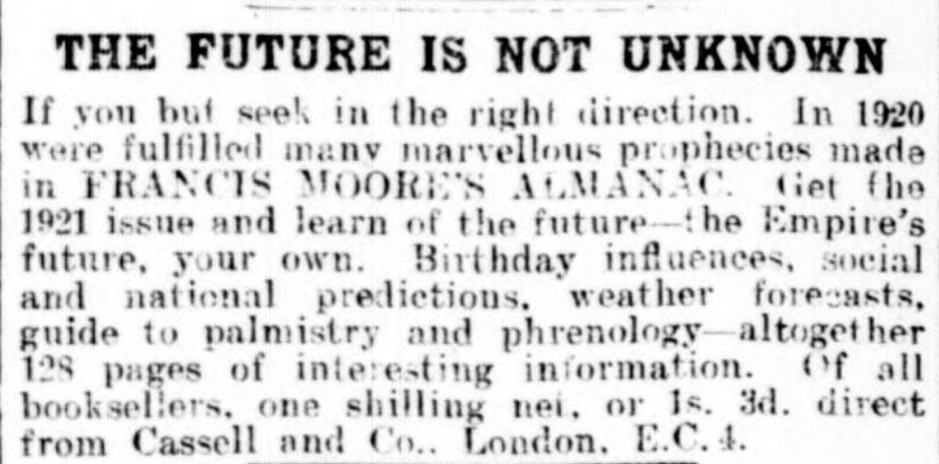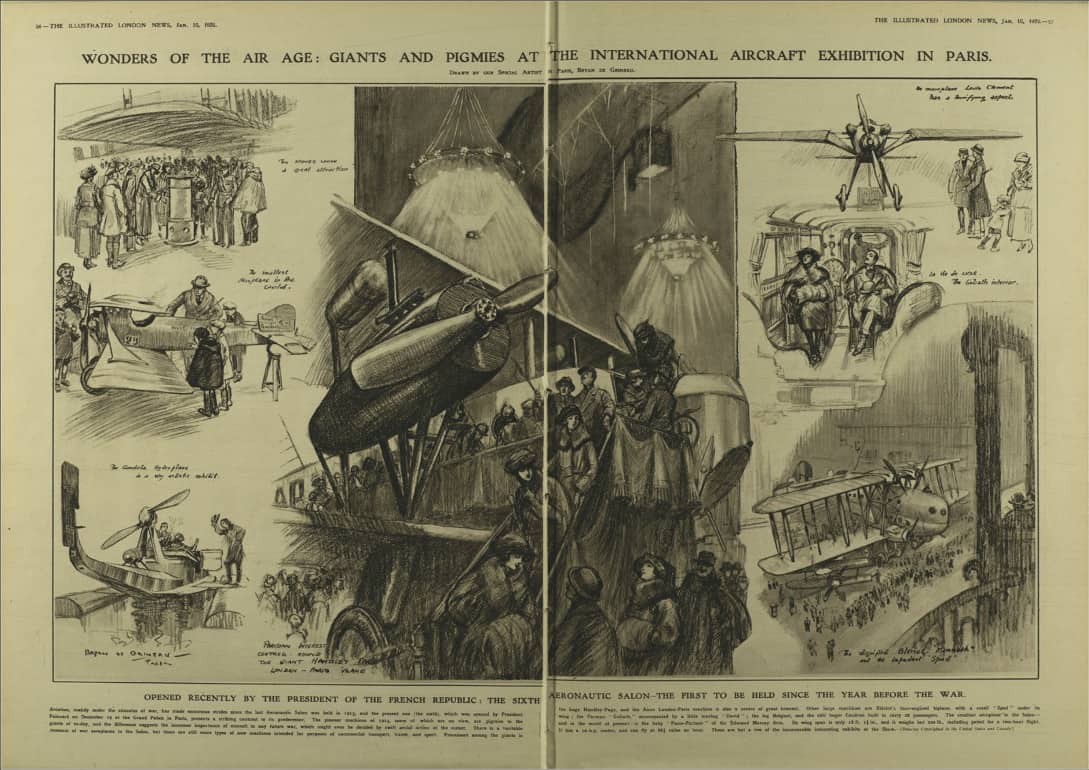│by Matthew Trenholm, Gale Ambassador at the University of Exeter│
In my last blog, I chose to focus on one Gale archive, Nineteenth Century Collections Online, but this time I wanted to demonstrate the full power of the Gale Primary Sources platform by looking at one topic across many archives simultaneously. The topic I have chosen is “the future” and what people a century ago believed it would look like. “The future” is an idea that is still endlessly debated, from dire warnings to wonderful promises; there is always something to discuss and the same was true a century ago. So, let’s jump into the archives and take a look at what the prophets of 1920 were saying!
This was a world emerging from the most devastating conflict the world had ever seen – and an era of major technological, political and social change. As a result, “the sprouting of prophecies seems to be more vigorous than ever” complained H. C. Bailey in The Daily Telegraph in January 1920. Cynical about the whole process of predicting the path the future would take, he wrote:

Houses staffed by machines
Bailey believed that the future would mean “cities full of houses staffed by machines” but he saw this not as an opportunity but one that was going to cause its own problems – namely not having enough people to repair them!
Taxis replaced by “air-cars”
Some were more positive about technological change. Aeroplanes had shown their value during World War I and many were scrambling to build bigger and better versions. An aeronautical correspondent for The Times believed that “air-cars” would replace taxis and trains to ferry people around. While this has not happened yet, another prediction was more on the money – the correspondent believed that new developments would at least allow for cheap “air transport”…

Changing attitudes
Others looked not to technological change but to a change in attitude. The Bishop of London said:

Grasping the possibilities of cinema
Entertainment was also changing in this period; the first commercial feature film with sound would be released in 1927. Back in 1920 though, a letter to the editor of the Daily Mail was less concerned about the technology and more the subject matter. The author complained that few films “are actually edifying” and “consist almost exclusively of passionate embraces and brutalising fights”. The author’s solution?

It would be interesting to know what this individual would have thought of films produced during the rest of the twentieth century – if they would feel any “great artists” have been able to “grasp the possibilities of cinema” and thus succeed in elevating the medium! What I find most fascinating is that this debate continues to this day, with directors and actors weighing in on the value of their work and the work of others. At least they have plenty of cinematic history to draw on now!
The fortune of the Empire
The last source I am going to show you is for those who find the whole process of prediction a little imprecise. Luckily, Francis Moore had the answer in the form of his Almanac:

Moore chose not to stretch himself, promising only predictions for the following year. As a History student, I find the inclusion of the “Empire’s future” in the almanac to be an interesting angle for exploration as it suggests people were just as concerned about the fortune of the Empire as their own personal prophecies.
I hope you have enjoyed this look at the future from the perspective of 1920. Some of the predictions were surprisingly prescient while others were a little far-fetched. As we enter the new decade though, I hope the messages of cooperation are the ones that continue to be the most relevant – although an “air-car” does sound pretty cool!
If you want to know more about the Gale Primary Sources platform or want to share any amazing discoveries from the archives, contact me on Twitter (@Matt_Trenholm) or message the Gale Resources at University of Exeter page on Facebook.
Interested in further discussion of society and mentality in the inter-war years, using primary sources? Check out: Between the Acts: Remembering War during the Interwar Period or Gangster’s Paradise: Exploring British Media Coverage of American Organised Crime.
Blog post cover image citation: New aeroplane designs shown off at the 1920 International Aircraft Exhibition in Paris. “Wonders of the air age: Giants and pigmies at the international aircraft exhibition in Paris.” Illustrated London News, 10 Jan. 1920, p. 56-57. The Illustrated London News Historical Archive, 1842-2003, https://link.gale.com/apps/doc/HN3100239740/GDCS?u=exeter&sid=GDCS&xid=3e3cf047

